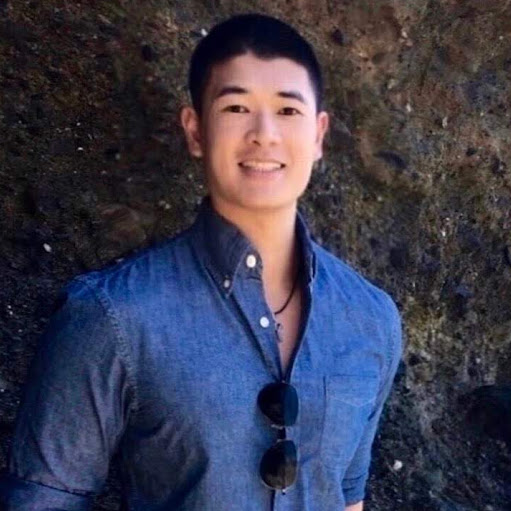Kenneth Abraham Tang
age ~35
from Mission Viejo, CA
- Also known as:
-
- Kenneth A Tang
- Kenneth Living Tang
- Tang Kenneth
Kenneth Tang Phones & Addresses
- Mission Viejo, CA
- 11420 Eastview Ct, San Diego, CA 92131 • (858)6939486
- 15373 Maturin Dr UNIT 191, San Diego, CA 92127
- Irvine, CA
Work
-
Company:Trinity designsSep 2012
-
Position:Founder of trinity
Education
-
School / High School:University of California Irvine- Irvine, CA2011
-
Specialities:BA in Cognitive Psychology
Skills
Opportunistic and capable of creating ch...
Ranks
-
Licence:New York - Due to reregister within 30 days of birthday
-
Date:1997
Us Patents
-
Point-To-Point, Millimeter Wave, Dual Band Free Space Gigabit Per Second Communication Link
view source -
US Patent:6556836, Apr 29, 2003
-
Filed:May 2, 2001
-
Appl. No.:09/847629
-
Inventors:John Lovberg - San Diego CA
Kenneth Y. Tang - Alpine CA
Randall Olsen - Carlsbad CA
Vladimir Kolinko - San Diego CA -
Assignee:Trex Enterprises Corporation - San Diego CA
-
International Classification:H04B 1500
-
US Classification:455505, 455562, 455 675, 455445, 455 10, 455 25, 455 73, 343894
-
Abstract:A point-to-point, wireless, millimeter wave communications link providing data transmission rates of over 1 billion bits per second (more than 1 Gbps) at ranges of several miles during normal weather conditions. In a preferred embodiment a communication link operates within the 92 to 95 GHz portion of the millimeter spectrum. A first transceiver transmits at a first bandwidth and receives at a second bandwidth both within the above spectral range. A second transceiver transmits at the second bandwidth and receives at the first bandwidth. The transceivers are equipped with antennas providing divergence of less than 10 steradians so that an almost unlimited number of transceivers can use the same spectrum. In a preferred embodiment the first and second spectral ranges are 92. 3-93. 2 GHz and 94. 1-95. 0 GHz.
-
Narrow Beamwidth Communication Link With Alignment Camera
view source -
US Patent:6587699, Jul 1, 2003
-
Filed:Jan 11, 2002
-
Appl. No.:10/044556
-
Inventors:Randall B. Olsen - Carlsbad CA
Louis Slaughter - Weston MA
John Lovberg - San Diego CA
Kenneth Y. Tang - Alpine CA
Vladimir Kolinko - San Diego CA
Paul Johnson - Kihei HI -
Assignee:Trex Enterprises Corporation - San Diego CA
-
International Classification:H04B 138
-
US Classification:455562, 455424, 455 25, 455 671, 455 675, 343894, 343874, 343754, 343720, 342359
-
Abstract:Equipment and methods for aligning the antennas of two transceivers of a point-to-point wireless millimeter wave communications link and keeping them aligned. Each of two communicating antennas is equipped with a telescopic camera connected to a processor programmed to recognize landscape images. The processors are programmed to remember the pattern of the landscape as it appears when the antennas are aligned. Each of the cameras then view the landscape periodically or continuously and if the landscape in view changes by more than a predetermined amount a signal is provided to indicate a misalignment. An operator can then take corrective action or alternatively the antenna system can be configured for remote or automatic realignment based of feedback from the camera. In a preferred embodiment, the antennas are initially aligned by substituting a narrow band oscillator power source for the signal transmitting electronics associated with a first antenna and a power detector is substituted for the signal receiving electronics of associated with a second antenna.
-
Light-Triggered Tattoo Process
view source -
US Patent:7131446, Nov 7, 2006
-
Filed:Mar 25, 2004
-
Appl. No.:10/810778
-
Inventors:Kenneth Y. Tang - Alpine CA, US
Betty W. Tang - Alpine CA, US -
International Classification:A61B 19/00
-
US Classification:128898, 607 88, 606 9
-
Abstract:A light-triggered tattoo process. A strong absorber of light energy and tattoo material are sandwiched under pressure between a skin region and a transparent window. Short pulses of light, at frequencies strongly absorbed by the strong absorber, illuminates the strong absorber through the window creating micro-explosions in the strong absorber that drive particles of the tattoo material into the skin region producing a tattoo.
-
Conference Area Network With Multibeam Antenna
view source -
US Patent:20020164946, Nov 7, 2002
-
Filed:Dec 1, 2001
-
Appl. No.:10/000182
-
Inventors:Randell Olsen - Carlsbad CA, US
Louis Slaughter - Weston MA, US
Chester Phillips - Germantown MD, US
Paul Johnson - Kihei HI, US
John Lovberg - San Diego CA, US
Kenneth Tang - Alpine CA, US
George Houghton - San Diego CA, US
Vladimir Kolinko - San Diego CA, US -
International Classification:H04H001/00
-
US Classification:455/003050, 455/562000, 455/561000
-
Abstract:A communication network including a point-to-point, wireless, millimeter wave trunk line communications link at high data rates in excess of 1 Gbps. This link is combined with a local network which includes at least one multi-beam antenna to provide high speed digital data communication for multiple users. In preferred embodiments the network also includes Ethernet service to additional users. In these preferred embodiments many or most of these multiple users are temporary users such as participants at a conference. In a preferred embodiment, a trunk line communication link operates within the 92 to 95 GHz portion of the millimeter spectrum. A first transceiver transmits at a first bandwidth and receives at a second bandwidth both within the above spectral range. A second transceiver transmits at the second bandwidth and receives at the first bandwidth. The transceivers are equipped with antennas providing beam divergence small enough to ensure efficient spatial and directional partitioning of the data channels so that an almost unlimited number of transceivers will be able to simultaneously use the same spectrum.
-
Point-To-Point, Millimeter Wave, Free Space Narrow Beam Width Communication Link
view source -
US Patent:20020164959, Nov 7, 2002
-
Filed:Jun 2, 2001
-
Appl. No.:09/872621
-
Inventors:Randall Olsen - Carlsbad CA, US
John Lovberg - San Diego CA, US
Kenneth Tang - Alpine CA, US
Vladimir Kolinko - San Diego CA, US
George Houghton - San Diego CA, US -
International Classification:H04B001/38
-
US Classification:455/073000, 455/067100, 455/505000, 455/067600
-
Abstract:A point-to-point, wireless, millimeter wave communications link at ranges of several miles during normal weather conditions. In a preferred embodiment a communication link operates within the 92 to 95 GHz portion of the millimeter spectrum and provides data transmission rates in excess of 155 Mbps. A first transceiver transmits at a first bandwidth and receives at a second bandwidth both within the above spectral range. A second transceiver transmits at the second bandwidth and receives at the first bandwidth. The transceivers are equipped with antennas providing beam divergence small enough to ensure efficient spatial and directional partitioning of the data channels so that an almost unlimited number of transceivers will be able to simultaneously use the same spectrum. Antennas and rigid support towers are described to maintain beam directional stability to less than one-half the half-power beam width. In a preferred embodiment the first and second spectral ranges are 92.3-93.2 GHz and 94.1-95.0 GHz and the half power beam width is about 0.36 degrees or less.
-
Millimeter Wave Transceivers For High Data Rate Wireless Communication Links
view source -
US Patent:20020165002, Nov 7, 2002
-
Filed:Jan 31, 2002
-
Appl. No.:10/061872
-
Inventors:Vladimir Kolinko - San Diego CA, US
Richard Chedester - Whately MA, US
Randall Olsen - Carlsbad CA, US
John Lovberg - San Diego CA, US
Kenneth Tang - Alpine CA, US -
International Classification:H04B007/00
-
US Classification:455/500000, 455/073000
-
Abstract:High performance transceivers for wireless, millimeter wave communications links at frequencies in excess of 70 GHz. A preferred embodiment built and tested by Applicants is described. This embodiment provides a communication link of more than eight miles which operates within the 71 to 76 GHz portion of the millimeter spectrum and provides data transmission rates of 1.25 Gbps with bit error rates of less than 10. A first transceiver transmits at a first bandwidth and receives at a second bandwidth both within the above spectral range. A second transceiver transmits at the second bandwidth and receives at the first bandwidth. The transceivers are equipped with antennas providing beam divergence small enough to ensure efficient spatial and directional partitioning of the data channels so that an almost unlimited number of transceivers will be able to simultaneously use the same spectrum. In a preferred embodiment the first and second spectral ranges are 71.8+/-0.63 GHz and 73.8+/-0.63 GHz and the half power beam width is about 0.2 degrees or less. Preferably, a backup transceiver set is provided which would take over the link in the event of very bad weather conditions.
-
Communication System With Multi-Beam Communication Antenna
view source -
US Patent:20030022694, Jan 30, 2003
-
Filed:Sep 28, 2001
-
Appl. No.:09/965875
-
Inventors:Randall Olsen - Carlsbad CA, US
Chester Phillips - Germantown MD, US
John Lovberg - San Diego CA, US
Kenneth Tang - Alpine CA, US
Vladimir Kolinko - San Diego CA, US -
International Classification:H04B007/00
-
US Classification:455/562000, 455/272000
-
Abstract:A wireless cellular communication system in which cellular base stations utilize multi-beam antenna to communicate with a large number of users. Each of the base station beams is a narrow beam of less than 10 degrees permitting reuse of available spectrum many times. A preferred antenna is described which broadcasts about 12 simultaneous beams, each about 5 degree, the 12 beams together covering a fan arc of about 60 degrees with the beams overlapping somewhat but interference is avoided by having adjacent beams broadcast at different frequencies within an authorized broadcast bandwidth. Six antennae mounted in a hexagonal manner thus cover a 360-degree azimuthal range. Preferably, users of the system communicate with the base station using a single narrow beam antenna directed at the base station. Since all beam are narrow beams many base stations may be located in the same cellular region permitting more than an order of magnitude increase in the utilization of available bandwidth and permitting a huge increase in bandwidth per customer. In a preferred embodiment the base stations communicate with a central office via a narrow-beam millimeter wave trunk line. The transceivers are equipped with antennas providing beam divergence small enough to ensure efficient spatial and directional partitioning of the data channels so that an almost unlimited number of point-to-point transceivers will be able to simultaneously use the same millimeter wave spectrum.
-
Wireless Surveillance System
view source -
US Patent:20070013513, Jan 18, 2007
-
Filed:Mar 28, 2006
-
Appl. No.:11/392376
-
Inventors:Kenneth Tang - Alpine CA, US
Lance Brees - San Diego CA, US
Richard Chedester - Whately MA, US -
International Classification:G08B 13/00
H04N 7/18 -
US Classification:340541000, 348143000
-
Abstract:A surveillance system utilizing existing street lighting equipment. In a preferred embodiment, surveillance units include a small camera and a wireless transceiver and a connector that allows the surveillance units to plug into an existing outdoor light in the place of the outdoor lights' photo cells. In this preferred embodiment communication between the lights and the cellular station is at frequencies of about 2.4 GHz and uses the 802.11b protocol that permits transmission of data at up to 11 million bits per second or the 802.11g protocol that permits transmission of data at up to 54 million bits per second. The cellular stations then communicates with the central monitoring station at a frequency range of 71-76 GHz and 81 to 86 GHz that permits transmission of data at about 1.0 billion bits per second. In an example system, with 1,000 surveillance cameras (each camera unit plugged into the photocell receptacle of a street light), 100 camera units communicate with each of 10 cellular stations and the 10 cellular stations communicate with a single central monitoring station.
Resumes

Kenneth Tang
view sourceLocation:
San Diego, CA
Work:
University of Richmond Asian
Vice President of Asian Student Union
Abercrombie & Fitch
Model and Sales Associate
University of Richmond
Athletics Public Relations Assistant
Fbi
Fbi Intern
Children Club
President of the Invisible
Vice President of Asian Student Union
Abercrombie & Fitch
Model and Sales Associate
University of Richmond
Athletics Public Relations Assistant
Fbi
Fbi Intern
Children Club
President of the Invisible
Education:
University of Richmond May 2012
Bachelors, Bachelor of Science National Chengchi University 2010
Bachelors, Bachelor of Science National Chengchi University 2010
Skills:
Handling Money
Gamma
Cpa
Accounting
Sports
Africa
Psi
Taping
Administrative Work
Sales
Community
Chinese
2003 Present
Extroverted
Universities
Trade Unions
Mentoring
Finance
Asia
San Diego
Athletics
Netitor
Extracurricular Activities
Video
Balance Sheet
Dec Alpha
Computer Program
Strengthening
Microsoft Excel
Spread
Uganda
Red Cross
Taiwan
Budgets
Management
Delta
Public Relations
Financial Statements
Research
Cif
Science
System Monitoring
Investigation
Mandarin
Cultural Heritage
Field Work
Income
Tennis
Philanthropy
Promoting
Websites
Gamma
Cpa
Accounting
Sports
Africa
Psi
Taping
Administrative Work
Sales
Community
Chinese
2003 Present
Extroverted
Universities
Trade Unions
Mentoring
Finance
Asia
San Diego
Athletics
Netitor
Extracurricular Activities
Video
Balance Sheet
Dec Alpha
Computer Program
Strengthening
Microsoft Excel
Spread
Uganda
Red Cross
Taiwan
Budgets
Management
Delta
Public Relations
Financial Statements
Research
Cif
Science
System Monitoring
Investigation
Mandarin
Cultural Heritage
Field Work
Income
Tennis
Philanthropy
Promoting
Websites

Creative Media Producer
view sourceLocation:
300 Brannan St, San Francisco, CA 94107
Industry:
Automotive
Work:
Kia Motors America Jun 2019 - Sep 2019
Strategic and Business Intelligence Intern
Western Digital Apr 2017 - Jun 2019
Internal Auditor
Connor Consulting Corp May 2015 - Feb 2017
Senior Audit Associate
The Keylight Perspective May 2015 - Feb 2017
Creative Media Producer
Capital Group Feb 2014 - May 2015
Tax Specialist
Strategic and Business Intelligence Intern
Western Digital Apr 2017 - Jun 2019
Internal Auditor
Connor Consulting Corp May 2015 - Feb 2017
Senior Audit Associate
The Keylight Perspective May 2015 - Feb 2017
Creative Media Producer
Capital Group Feb 2014 - May 2015
Tax Specialist
Education:
University of Southern California - Marshall School of Business 2020
Master of Business Administration, Masters, Marketing University of Richmond - Robins School of Business 2008 - 2012
Bachelors, Bachelor of Science, Accounting University of Richmond
Marshall School
Master of Business Administration, Masters University of Richmond - Robins School of Business
Master of Business Administration, Masters, Marketing University of Richmond - Robins School of Business 2008 - 2012
Bachelors, Bachelor of Science, Accounting University of Richmond
Marshall School
Master of Business Administration, Masters University of Richmond - Robins School of Business
Skills:
Accounting
Auditing
Microsoft Excel
Loan Remediation
Financial Reporting
Financial Accounting
Internal Controls
Research
Microsoft Word
Microsoft Office
Powerpoint
Social Media
Management
Event Planning
Financial Analysis
Public Speaking
Microsoft Powerpoint
Strategy
Business Strategy
Business Intelligence
Automotive
Corporate Strategy
Business Development
Auditing
Microsoft Excel
Loan Remediation
Financial Reporting
Financial Accounting
Internal Controls
Research
Microsoft Word
Microsoft Office
Powerpoint
Social Media
Management
Event Planning
Financial Analysis
Public Speaking
Microsoft Powerpoint
Strategy
Business Strategy
Business Intelligence
Automotive
Corporate Strategy
Business Development
Languages:
English

Kenneth Tang
view source
Kenneth Tang
view source
Troy High School
view sourceWork:
Troy High School

Kenneth Tang
view source
Kenneth Tang
view sourceLawyers & Attorneys

Kenneth Wai Loong Tang - Lawyer
view sourceAddress:
Chang See Hiang & Partners
(633)99949xx (Office)
(633)99949xx (Office)
Licenses:
New York - Due to reregister within 30 days of birthday 1997
Education:
Newcastle University
King's College London
King's College London
Name / Title
Company / Classification
Phones & Addresses
Administrator
Tang, Kenneth
Junior Colleges and Technical Institutes
Junior Colleges and Technical Institutes
2729 Via Asoleado, Alpine, CA 91901
Trex Enterprises Corporate Chairman Of The Board
Trex Enterprises Corporation
Electronic Computers
Electronic Computers
10455 Pacific Center Ct, San Diego, CA 92121
CEO
Trex Enterprises Corp
Construction Machinery and Equipment
Construction Machinery and Equipment
10455 Pacific Center Ct, San Diego, CA 92121
Website: trexenterprises.com
Website: trexenterprises.com
President
LOEA CORPORATION
Communications Services
Communications Services
10455 Pacific Ctr Ct, San Diego, CA 92121
(858)6465700, (858)6465301
(858)6465700, (858)6465301
President
TREX Aviation Systems
Airlines/Aviation · Whol Electronic Parts/Equipment
Airlines/Aviation · Whol Electronic Parts/Equipment
10455 Pacific Ctr Ct, San Diego, CA 92121
President
Trex Enterprises
Commercial Physical Research
Commercial Physical Research
10455 Pacific Ctr Ct, San Diego, CA 92121
(858)5973087, (858)6465300
(858)5973087, (858)6465300
Chairman
NOCSTA CORPORATION
Installation & Management Of Wireless Networks · Business Services · Communication Services
Installation & Management Of Wireless Networks · Business Services · Communication Services
10455 Pacific Ctr Ct, San Diego, CA 92121
733 Bishop St, Honolulu, HI 96813
733 Bishop St, Honolulu, HI 96813
President
BAILEY EXPRESS INC
Nonclassifiable Establishments
Nonclassifiable Establishments
11069 Lambert Ave, El Monte, CA 91731
365 W Garvey Ave, Monterey Park, CA 91754
365 W Garvey Ave, Monterey Park, CA 91754
Myspace
Flickr

Kenneth Tan Tang
view source
Kenneth Tran Tang
view source
Kenneth Tang
view source
Kenneth Tang
view source
Kenneth E. Tang
view source
Kenneth Tang
view source
Kenneth Tang
view source
Kenneth Tang
view sourceClassmates

Kenneth Tang
view sourceSchools:
Albert Enstine High School Wheaton MD 1988-1992
Community:
Frances Hunt, Sonia Carpenter, Stuart Harris, Barry Mitzner

Kenneth Tang
view sourceSchools:
Kennedy Trail Elementary School Surrey Saudi Arabia 1991-1993
Community:
Wayne Egelstad, Joan Lundberg

Kenneth Tang
view sourceSchools:
Shawnigan Lake School Shawnigan Lake Saudi Arabia 1982-1983
Community:
Rebecca Blankenship, Tony Volchok, Arne Hovind, Patricia Rios, John Nugent

Kennedy Trail Elementary ...
view sourceGraduates:
Rachel Cousins (1989-1996),
Patricia Ko (1989-1997),
Kenneth Tang (1991-1993),
Melanie Kettingolivier (1988-1989),
Kulpreet Mander (1999-2001)
Patricia Ko (1989-1997),
Kenneth Tang (1991-1993),
Melanie Kettingolivier (1988-1989),
Kulpreet Mander (1999-2001)

Shawnigan Lake School, Sh...
view sourceGraduates:
Kenneth Tang (1982-1983),
Barry Waterlow (1967-1969),
Erin Mitchell (1991-1993),
Christopher Heffelfinger (1969-1973),
Peter Legun (1996-2000)
Barry Waterlow (1967-1969),
Erin Mitchell (1991-1993),
Christopher Heffelfinger (1969-1973),
Peter Legun (1996-2000)
Googleplus

Kenneth Tang
Education:
ZHEJIANG university.
Tagline:
A talented student. A great saxophone player. A good basketball player.
Bragging Rights:
In college.

Kenneth Tang
Work:
Chrysler Group LLC - Chassie
Education:
Humber College - Advertising and graphic design

Kenneth Tang
Education:
University of California, Irvine - Biology

Kenneth Tang
Work:
Wing Hang Bank (2011)

Kenneth Tang
Education:
University of California, Irvine - Biological Sciences

Kenneth Tang
About:
Voilà! In view, a humble vaudevillian veteran, cast vicariously as both victim and villain by the vicissitudes of Fate. This visage, no mere veneer of vanity, is a vestige of the vox populi, now vacan...
Tagline:
So let me simply add that it's my very good honor to meet you and you may call me V
Bragging Rights:
I see the sun rise and set; I see leaves fall to the ground; I see the stars in the night sky; I see the sparkle in my little boy's eyes; I feel the heartbeat of my love. ;-)

Kenneth Tang
Tagline:
Tang Bud og Cykelservice

Kenneth Tang
Youtube
Get Report for Kenneth Abraham Tang from Mission Viejo, CA, age ~35













